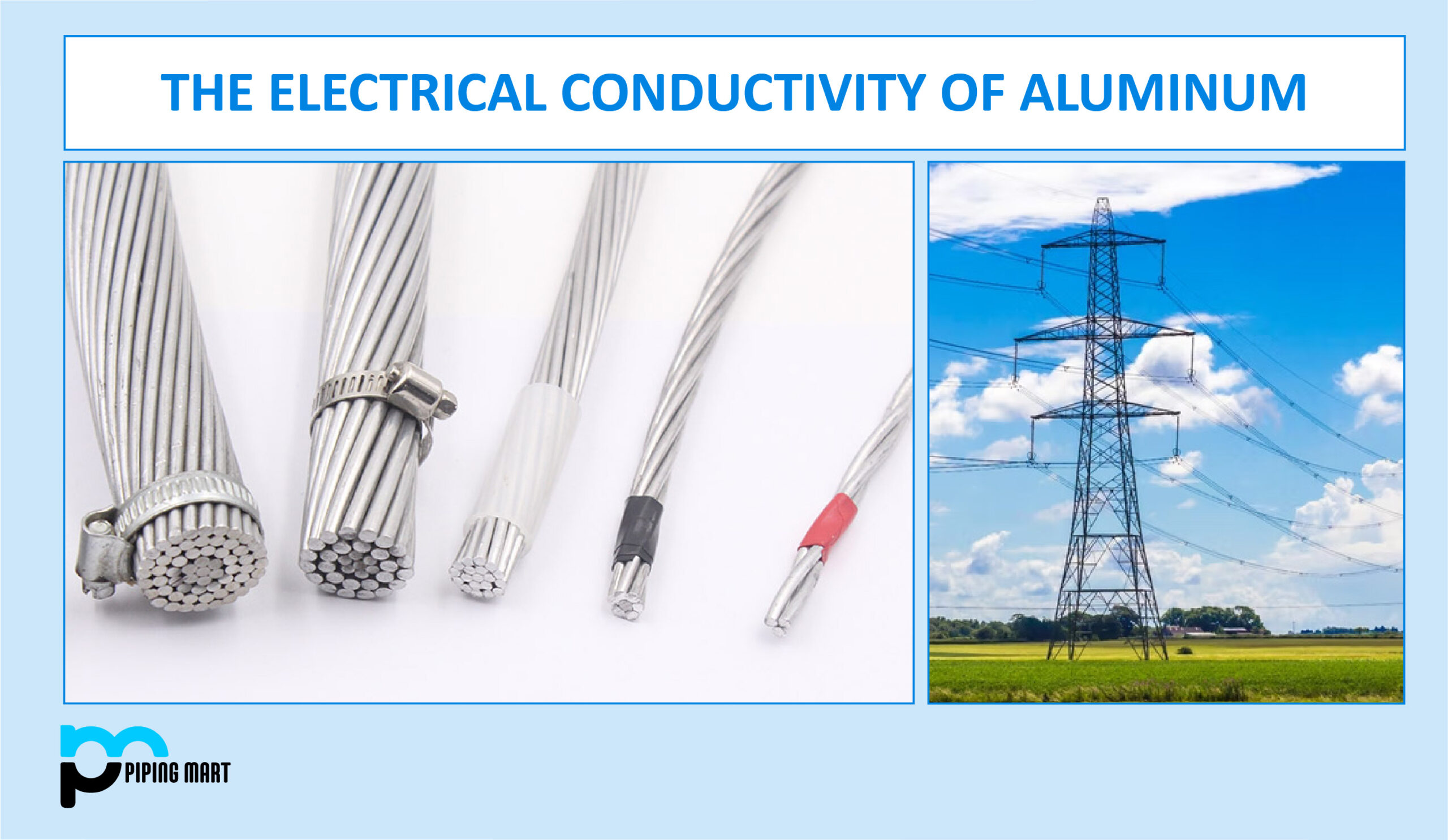The capacity to carry electricity is one of several metals’ key characteristics, and aluminum consistently ranks among the top performers in this area. Few materials can compete with aluminum as an electrical conductor. Because of this, aluminum alloys have become a popular option across a wide range of industries and technology, including aerospace, heavy-duty transformers, and high-tech consumer electronics.
Because of the chemical makeup of metals, metallic bonding typically permits the conduction of electricity. Electrons continually circulating about metallic atoms make it possible for electricity to flow smoothly among the ions. While pure silver, pure copper, and pure gold are the best metal conductors, pure aluminum is the fourth best. On the other end of the scale, stainless steel is one of the worst conductors, while iron is a mediocre conductor.
Silver and gold are not viable solutions on an industrial scale due to the apparent cost involved. Only copper remains a more practical electrical conductor; when you compare the two, aluminum has several benefits that make it more desirable to producers and designers.
Aluminum is, by nature, a conductor.
Due to the perceived expense required, silver and gold are not viable choices on an industrial scale. The only remaining more useful electrical conductor is copper, and when you compare the two, aluminum has some advantages that make it more appealing to manufacturers and designers.
The critical temperature for superconductivity in aluminum is 1.2 kelvin. About 100 gauss is the magnetic field that is necessary for it. Aluminum also has the property of being paramagnetic, which means that static magnetic fields are not a concern. However, it should be noted that due to the induction of eddy currents, it may be significantly affected by a shifting magnetic field.
Aluminum has a conductivity that is slightly more than half (61 percent) that of copper.On the surface, this seems to imply that copper is a better conductor than aluminum. However, this ignores that aluminum weighs only a third as much as copper. As a result, the aluminum wire will weigh half as much if you have two metal wires, one made of copper and the other of aluminum, each capable of conducting the same amount of energy. Due to this, aluminum is typically less expensive.
What applications most commonly rely on aluminum as a conductor?
Even aluminum foil can be utilized as a conductor because of the metal’s exceptional electrical conductivity. Although foil is typically too delicate for most industrial uses, this highlights this substance’s benefits.
Electric wire is among the most well-known and traditional uses for aluminum. For the weight mentioned above and cost considerations, aluminum makes up the majority of the insulated power lines in the American electrical system. Aluminum cables are lighter than copper ones, which is why they have been used in the country’s electrical infrastructure since the late 1800s.
In addition to overhead power cables, aluminum wiring is also used in some residences, electronic gadgets, and appliances like fans and lamps.
With that in mind, copper will frequently be chosen over aluminum in smaller wire sizes. This is because aluminum wiring does have one disadvantage that you should be aware of: it can be very corrosive when coupled with other metals, so you cannot, for instance, use aluminum wire with copper conductors. A large portion of our infrastructure depends on copper, a common material in many original electrical gadgets. Aluminum would be too expensive to switch to, which is why aluminum wiring was mainly used in overhead power cables for many years.
Aluminum wiring has been taking the place of copper wiring lately. As a result, it’s critical that you conduct research, comprehend how your application will be employed, and know the current copper-or aluminum-wire specifications.
What are aluminum electrical cables made of?
Power cables made of aluminum often come in four varieties. The first is called All Aluminum Conductor (AAC) and is made of aluminum of the Electrical Conductor grade. Although this aluminum alloy has a conductivity of 61% of that of copper, it is not frequently used in transmission lines because it lacks strength. Urban distribution lines, which often have shorter spans and more stringent conductivity requirements, are where you’ll find it.
The All Aluminum Alloy Conductor (AAAC), manufactured from alloy 6201, comes next. This alloy has a conductivity of roughly 52% of copper and outstanding strength. Because of its resilience to corrosion, it is commonly used for distribution and is particularly helpful in coastal areas.
A spiraled layer of aluminum 1350 alloy wires is wrapped around a steel core to create an Aluminum Conductor Steel Reinforced (ACSR). Due to the steel core’s greatly enhanced strength and less sag, this cable type is suited for distribution and transmission. It is frequently utilized at river crossings and other locations where greater force is required.
Lastly, Aluminum Conductor, Alloy Reinforced (ACAR), combines aluminum 1350 with a core of aluminum alloy 6201. This gives it better mechanical and electrical characteristics than ACSR, which increases reliability but increases costs compared to other cables. Both overhead transmission and distribution cables contain it.

Pipingmart is B2B portal specializes in industrial, metal and piping products. Also, share latest information and news related to products, materials and different types grades to help business dealing in this industry.




